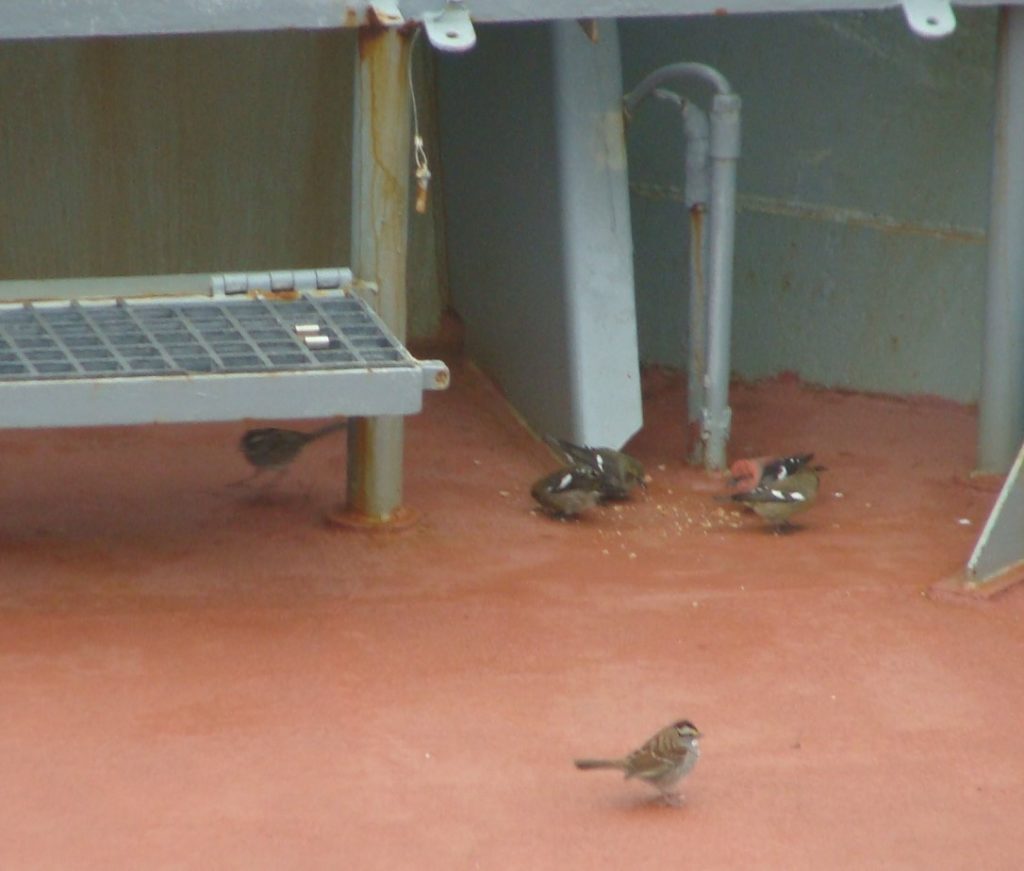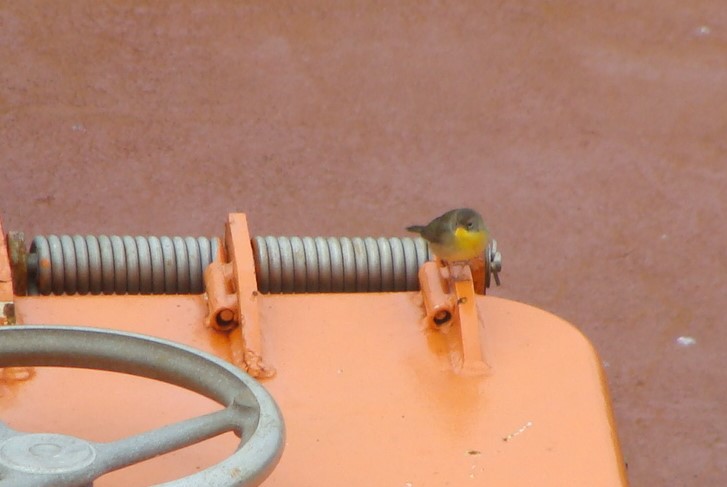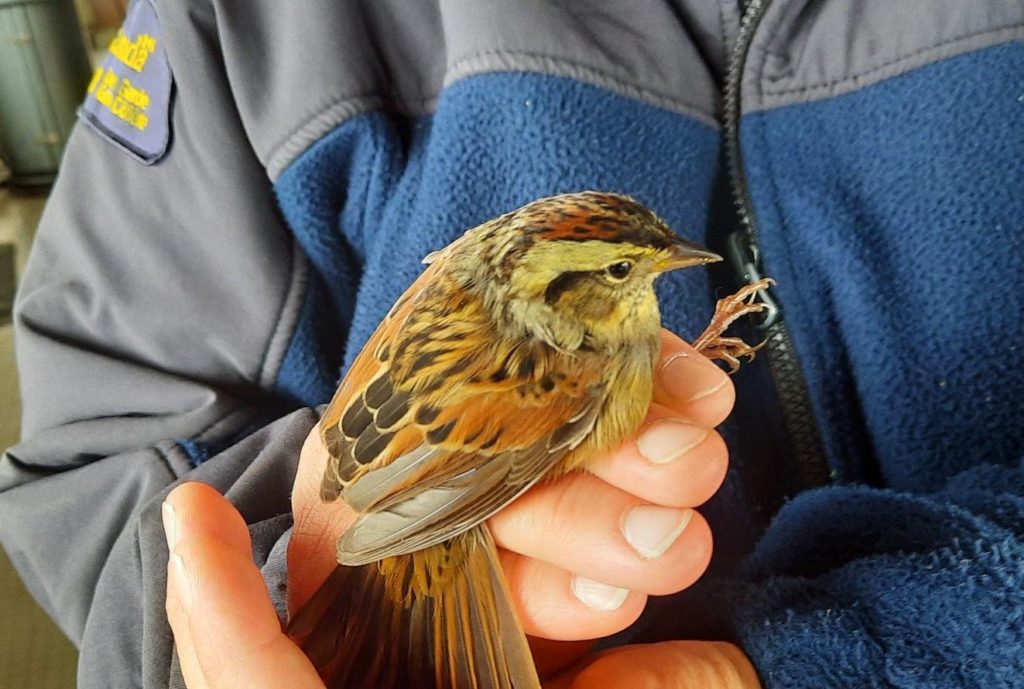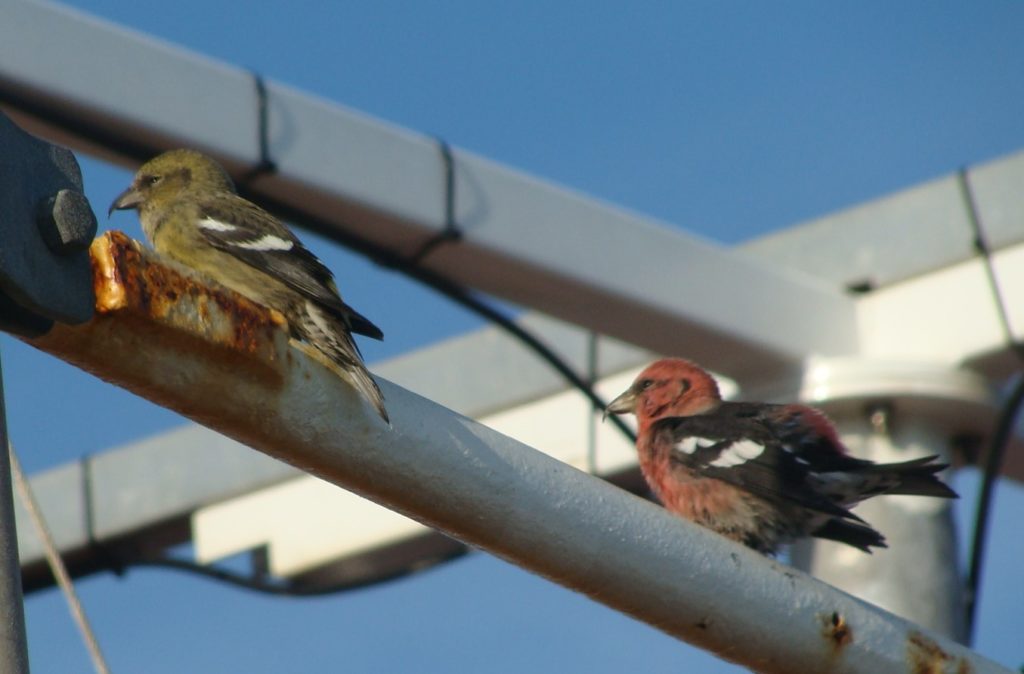We had spent the night of October 12th working our way into Chaleur Bay on the CCGS Hudson, stopping at preset locations to drop instruments into the water to measure temperature, oxygen level, salinity at various levels from the bottom up and, in some spots, to drop a net to capture plankton.
The morning of October 13th we were working our way back out, running east. Chaleur Bay is a large inlet of the Gulf of St. Lawrence that separates NE New Brunswick from Quebec’s Gaspe Peninsula; it runs east to west. At its widest point it is about 15-17 nautical miles wide. When we started, shortly after sunrise the skies were clouded (from the showers the night before) and, although mild, there was a light wind blowing from the SE.
My role on the Hudson is to count seabirds following a very specific protocol which would allow, eventually, for the determination of a density figure – X number of birds (bird species) per square kilometer. I must say that on this particular morning it wasn’t very exciting as the Bay seemed pretty well empty of seabirds. My thinking is that many of them have made the move to their wintering quarters out in the open waters of the Atlantic – the Gulf freezes during the Winter so not much reason to tarry. It seems that Northern Gannets, though, are making a go of it as they have been common all along the route….and juveniles are just starting to show up, having recently fledged and are learning what it takes to survive. Plunge diving from great heights might look like fun but its an essential skill that, if not learned, will determine a gannet’s future.
As we proceeded East, out to the open Gulf, I began to notice passerines flying to the ship. Some seemed to go around and keep going; others went around a couple of times, even landed on the deck, and then kept going; and some landed and just began to look for sustenance. This happened more and more as the day went on – and the wind picked up from the SE and showers moved in. As the weather worsened more birds seemed to be landing and staying…..searching for any food they could find, and any insects were quickly gone so soon there was nothing left.
I was surprised that some decided to stay with the ship as the southern shore was only 4 nautical miles away at this point. I guess I was even more surprised that they were flying at all. Passerines usually migrate at night but here was a prime example of diurnal migration. I wondered where this set of birds had started the night before and why they hadn’t put down at daybreak. Did the southern shore look “doable” so they just kept going when morning broke? Did they sense that poor weather was coming so they wanted to get as far as possible? And when the conditions changed against them why did some stay while others continued on? Had they run out of energy fighting the increasing wind and the ship was a last resort? Lots of questions….but not a lot of answers I’m afraid.
So…what to do with a flock of stranded birds on the ship….and no bird seed. I got some multi-grain bread from the kitchen and broke it up into very small pieces (and poured out the leftover grains from the bread bag). I created 2 “feeding stations”: one at the stern and one at the bow, both in areas sheltered from the wind. It didn’t take a bedraggled White-throated Sparrow long to find this windfall and as soon as the other birds saw one of their fellows feeding they were right in there. I had to replenish the feed 3 times on the first day as they seemed ravenous. I was able to monitor the bow group easily from my window on the bridge. At any one time there were 19-22 birds using it.
On the 14th the conditions were much the same and the feeding station (I went with just the bow station now as I could easily monitor it) was heavily used. At one point I made a quick count: 9 White-throated Sparrows, 9 Dark-eyed Juncos, 2 White-winged Crossbills, 1 Pine Siskin, and 1 Song Sparrow all feeding at the same time…then flying off to hide in the ship’s nooks and crannies while other birds took their places.
In the afternoon the conditions got better and I saw evidence of birds flying from the ship even though land was considerably farther. I also saw migrating flocks of White-winged Crossbills fly to the ship, around it and then keep going but in “strange” directions: one group of 50+ headed SE into the diminishing wind while another group of 40+ went NW!?
By the 15th the feeding group was cut in at least half. A quick count revealed 4 juncos, 4 White-throated Sparrows, and 1 Pine Siskin. And by the morning of the 16th, in Pictou harbour, there were only 2 juncos and they flew the half kilometer to the mainland as soon as it got light.
Here’s a list of the birds I encountered (* indicates a species that stayed on the vessel for awhile rather than just checking it over and then continuing):
Myrtle Warbler* (1 later found dead)
Black-throated Blue Warbler
Common Yellowthroat*
Dark-eyed Junco*
Fox Sparrow
Song Sparrow*
White-throated Sparrow*
Swamp Sparrow*
Savannah Sparrow *(later found dead)
Purple Finch*
Pine Siskin*
White-winged Crossbill*
Hermit Thrush
Swainson’s Thrush
Golden-crowned Kinglet
Ruby-crowned Kinglet
Horned Lark
American Pipit





I love reading your reports. I can’t get past the variety of passerines you’re seeing out there! Let this be a lesson: pack some sacks of black oil sunflower seeds next time. You probably saved quite a few lives with your improvising.
Thanks, but I’m not sure how that would go over with some of the crew who were complaining that they birds were crapping on the deck…..And in this situation I’m the low man on the totem pole.